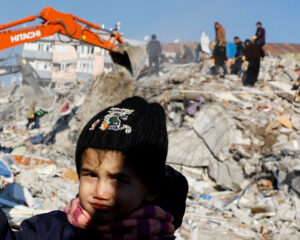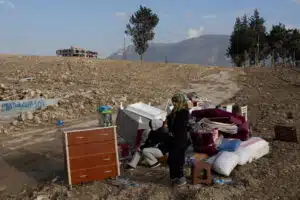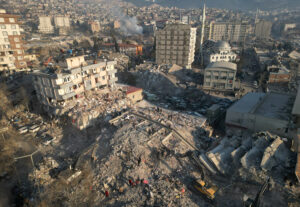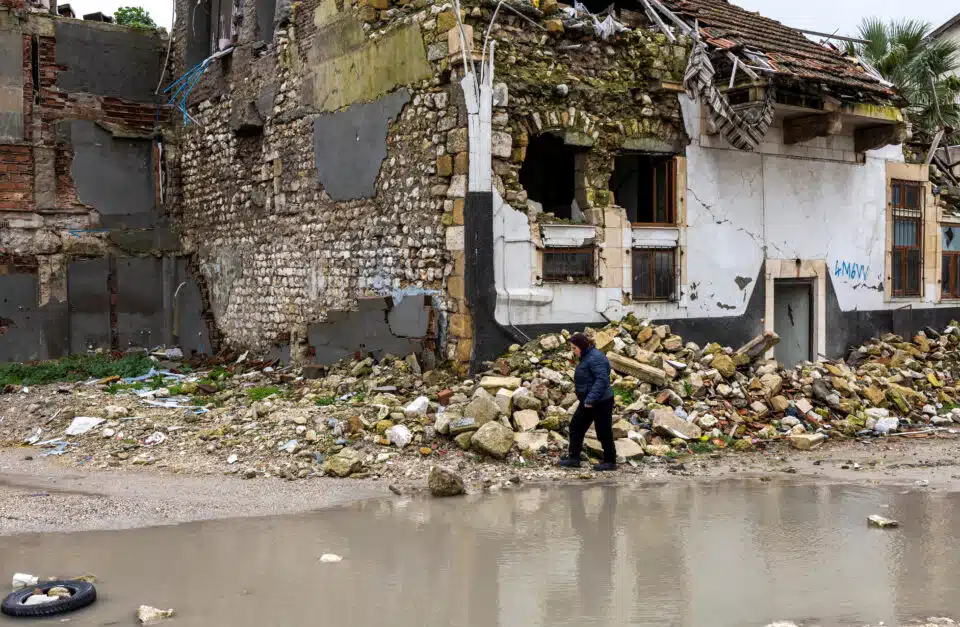HATAY, Feb 5 — Abdullah Yanar planted flowers in front of his container home to make it feel more like a real home for his family, who have been living in temporary shelters in southern Turkiye since last year’s devastating earthquake.
The 7.8-magnitude quake that struck on February 6, 2023, modern Turkiye’s deadliest, killed several of Yanar’s relatives and damaged his apartment, forcing him and his wife, daughter and son to move first into a tent and then to one container home after another.
“Thank God we have a roof over our heads. But it is a bit difficult to live in a container with two children,” Yanar said in his home in Hatay, the province hardest hit by the quake that cuts across southern Turkiye and northern Syria.
Yanar, who is 38 and works for the local authority, says that despite some rebuilding, it will take a very long time to restore the historic provincial capital of Antakya.
Faced with unaffordable rents on “real homes”, and unpredictable water and electricity supply in his 21 square-metre container house, he is not hopeful about his family’s future.
“I do not have any expectations. We do not enjoy life at all. But still, a thousand thanks to God,” he said.
The quake that struck in the early hours levelled towns and parts of some cities in the country’s southeast. It killed over 53,000 people in Turkiye, nearly 6,000 in neighbouring Syria, and left millions homeless.
A year on, those who survived and remain in Hatay province still live with the impact.
Much of the province collapsed in the quake, but hundreds of destroyed buildings have yet to be demolished, and many of the two-thirds of Hatay’s residents who stayed in the province now live in container homes.
In October, Yanar’s family moved into yet another container home, which has a small living room with an open kitchen, one bedroom and a bathroom. He says a four-fold jump in rents in the area means there is no option to move out.
In the same container city, Ali Riza and Sunay Gazaloglu sit on a sofa with their daughter, Ela, between them. The nine-year-old was the only one of their three daughters to survive when their home collapsed a year ago.
Ela plays with a red teddy bear without saying a word. She fears entering buildings and does not go to her four-storey school.
“We were a happy family before the earthquake. I had a job, but now I can no longer work after undergoing three operations,” said Ali Riza, who suffered serious injuries to his back when the quake struck.
For now, his family covers daily expenses with funding provided to victims by the Turkish Red Crescent.

Haunting Memories
In the wake of the disaster, President Tayyip Erdogan’s government promised to rebuild 680,000 homes across 11 provinces over two years, including some 250,000 in Hatay. Officials unveiled the latest homes for families in the run-up to the one-year anniversary.
Residents say the container homes are generally warm enough at night. Other displaced residents ended up in prefabricated houses that are a bit larger, with two bedrooms and a living room.
They include Gulcan Yilmaz, 47, a mother of two, who was miraculously rescued from the rubble of her eight-storey building five days after the quake.
“My feet and arms were hanging in the air,” she said of when she was trapped under rubble.
“When I freed my hands, I tore out my hair that was stuck. Then, my broken hand fell on my lap. I sat on a thin board for five days. I could not move my feet. The birds came, and I talked to them there under rubble.”
Yilmaz was later taken to Adana province by helicopter. When she opened her eyes in an intensive care unit, she saw that her legs had been amputated after getting gangrene from the cold.
She has since returned to Hatay for physiotherapy to help her with her prosthetic legs and, after living in a tent, moved in September to the prefabricated home in the Ekinci neighbourhood of Antakya city.
“In my eyes, this prefab home is a palace. But I want to live in one of these new apartments the government is building,” she said.

Dreams of Business
Some earthquake survivors still live in tents despite temperatures that dip to 4°C overnight.
In Samandag, a Mediterranean coastal city on Turkiye’s southernmost tip, Ozden Kar, 42, lives with her family and relatives in tents pitched outside the municipal government building, which was also damaged and is now made up of containers.
Kar says they have spent the winter with no heater in the tents that a benefactor provided. Authorities have referred them to a container city in Antakya, a 40-minute drive away, but they want to stay because the children’s school and her husband’s work as a livestock breeder are in Samandag.
“It is all here; I cannot go to Antakya,” she said.
Twelve of Kar’s relatives died in the earthquake. She said the family cannot move to an apartment due to high rents — and the lingering fear of an apartment’s durability.
“My daughter gets scared at the slightest rattle. We are all afraid,” she said.
Nadire Cabbaroglu, Kar’s 75-year-old mother, is an asthma patient who has had to see a doctor regularly since the quake. Toxic dust released from collapsed buildings triggered her asthma attacks, and she cannot leave her tent without wearing a mask.
Other residents of tents spoke of a desire to remain near relatives and familiar communities despite offers of container homes elsewhere in Hatay.
In Antakya’s historic Uzun Carsi Bazaar, some of which withstood the quake even as much of the city centre collapsed, economic strains are evident now that a third of the residents and tourists, once so vital, have vanished.
“Tourists do not visit Hatay anymore and many locals left the city or live in container houses located in the city’s outskirts. The recovery will take time,” said Fatih Uzunparmak, owner of a famous local dessert maker, Cinaralti Kunefe, whose shop once regularly had long queues outside.
Shoemaker Mustafa Okay says the shop owners in Uzun Carsi Bazaar are still struggling financially. But he is hopeful that things will get better in the coming months.
“I got loans from the banks, and now I have to repay them. Business is sluggish for now, but I hope it will get better after the winter,” he said.
— Reuters






